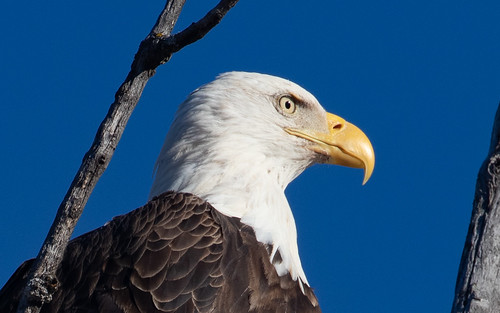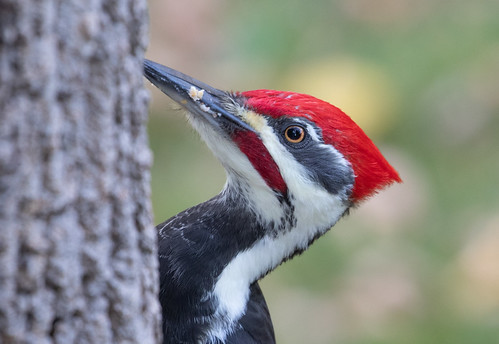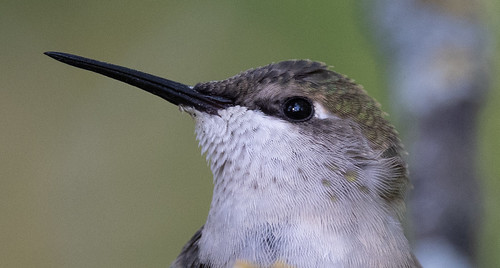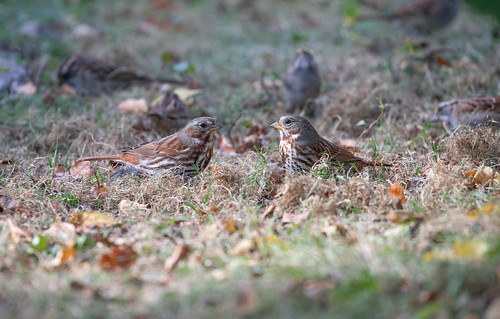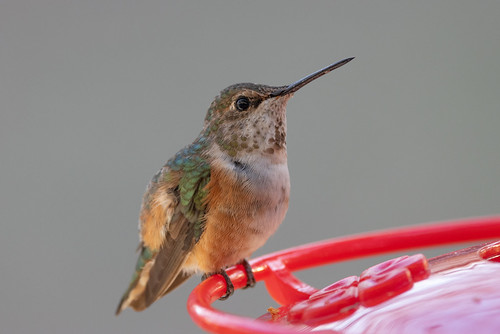Overview of bird diseases every spring
Overview about the 2022 avian flu outbreak
What are experts saying we should do about feeding?
What am I personally going to do about my own feeding?
1. Overview of bird diseases every spring
Every March and April, I read news stories and am plied with questions about bird diseases and whether people should close down their feeding stations for the year or even permanently. The end of winter is a very dangerous time for birds—in addition to all the other human-imposed dangers they face year-round, such as collisions with windows and other structures, being killed by house cats, habitat loss, pesticides, and air and water pollutants, a lot of natural phenomena kill birds as they gather in flocks during migration. Humans exacerbate some of these natural phenomena. Dangerous, bird-killing spring storms, and also droughts that make it difficult for migrating birds to find safe sources of surface water and that cause more and larger fires, are increasing in number and intensity thanks to climate change. Birds migrating by night are disoriented by light pollution. And various communicable diseases, from salmonella and botulism to avian flu, all natural pathogens that kill birds every year, proliferate where bird seed and droppings collect over winter, both in natural situations and near bird feeders.
That birds succumb to diseases is not a new phenomenon. Although the worst recorded disease outbreaks in natural populations have occurred mostly in waterfowl, spring disease outbreaks have also always affected winter finches, sparrows, and other ground-feeding birds, especially where they gather in large numbers. If there were no feeders at all, Fox Sparrows, juncos, redpolls, and lots of others would still be moving about and feeding in flocks—that’s what they do—and some of them would still be spreading and dying from these diseases.
That is not to say our feeders aren’t a serious factor and that we aren’t obligated to protect the birds drawn to our backyards from the risks our feeders and backyards pose. Russ and I started feeding birds in 1981 when we moved to Duluth, and that winter we fed huge numbers of Evening Grosbeaks and other winter finches, going through hundreds of pounds of sunflower seed. We had enough snowfalls that winter that we never saw a lot of spilled seed under the feeders until spring, but the melting snow revealed mountains of seed shells and wasted seeds on the ground, mixed in with months of accumulated bird poop.
Bird feces are obviously a source of disease organisms, and so is the ground itself—some disease organisms that affect birds are soil-borne. All of these microorganisms flourish when supplied with the moisture, nutrients and heat in rotting seed and bird poop. Back in the spring of 1982, I knew intuitively that I needed to clean up the mess. That year and ever since, Russ and I have raked under the feeders and disposed of the rakings in sealed plastic bags or, some years, in compost bins with screening to keep birds out.
I’ve been writing and talking about the importance of cleaning up the literal crap under bird feeders for four decades. And in 1993, almost 30 years ago, I wrote in the April 7 entry in my first book, For the Birds: An Uncommon Guide, about keeping the seed shells and other matter that collects under bird feeders raked up to prevent birds from contracting and spreading communicable diseases. It felt to me like a no-brainer.
 |
| This was our bird feeding station the spring of 1982, after our first winter of bird feeding. |
2. Overview about the 2022 outbreak of Highly Pathogenic Avian Influenza
Just as the coronavirus was not new in 2019, avian flu is not new, though it’s usually mostly limited to waterfowl and domesticated poultry. This year’s variant is much more lethal and communicable, called HPAI, for Highly Pathogenic Avian Influenza. Like most bird diseases, this one is spread via eye, nasal, and mouth secretions and feces, and so it’s mostly spread by birds in close contact, including scavengers eating the dead and dying.
At first, all the media attention this year was focused on the multibillion-dollar poultry industry. Industrial farms and live animal markets, where highly stressed birds and other animals are held in close proximity, are hotbeds of diseases affecting wildlife and humans, as are the fields and wetlands where their farm wastes run off or are dumped. Poultry farms were almost certainly the original source of Mycoplasma gallisepticum, the conjunctivitis that people call House Finch eye disease. Covid-19 almost certainly had its start in live animal markets. Once any disease gets started, containing it can be difficult to impossible, and new variants, some extremely dangerous, keep evolving. Poultry farmers of course cannot afford for diseases to kill their birds, so a LOT of money goes into tracking, testing, and pro-active culling of infected birds. That was in the news a lot for weeks this year.
At the start of April, media coverage about this year’s bird flu variant switched from poultry farms to wild birds. On the one hand, it’s about time, but on the other, the best we have is anecdotal information, and apparently there will be absolutely no systematic studies to track the disease among wild birds.
What little hard data we have is from the USDA’s Animal and Plant Health Inspection Service, or APHIS. They’re maintaining a web page titled 2022 Detections of Highly Pathogenic Avian Influenza in Wild Birds, which is updated frequently. As of April 14 when the page was last updated, the disease has appeared in more than 30 states including every state along the eastern seaboard and extending throughout the Midwest and as far west as Colorado. An astonishing 137 of the 665 birds on the APHIS list were Mallards—that’s a full 20 percent. And the vast majority of the others were other species of ducks, geese, and swans, along with a few individuals of other water birds that associate with waterfowl: Brown and American White Pelicans, Great Blue Herons, Ring-billed and Herring Gulls, and Sanderlings, all of which were likely exposed via the droppings of sick waterfowl.
Both Black and Turkey Vultures and 36 Bald Eagles have also been killed by it. This is genuinely tragic, but these species are all scavengers on waterfowl and occasionally on poultry farms, and seldom visit backyards or prey on small birds, so at least we know that feeder birds were not the likely source of the disease for them.
I think it goes without saying that even if this year’s avian flu outbreak was limited to waterfowl and birds associated with them, it would still be a serious problem which, as migration proceeds, is likely to become even worse. But the problem is wider than just waterfowl and their predators.
Five dead Snowy Owls from New Hampshire to North Dakota tested positive. Snowy Owls do often feed on ducks, and it’s easiest for them to catch sick ones, so if this had been the only owl species to have tested positive, that would be at least a little reassuring regarding our backyard birds, but other hawks and owls are also dying from it.
The APHIS website as of April 14 listed Cooper’s Hawks in New York and Wisconsin; Red-tailed Hawks in Massachusetts, Wisconsin, Iowa, Kansas, and South Dakota; a Red-shouldered Hawk in North Carolina; and Great Horned Owls in Florida and Minnesota. The Raptor Center treated three baby Great Horned Owls that died this week; their parents had been found dead; the owlets tested positive. We have no information about how they were exposed.
These birds and three pheasants in New York comprise the complete list of birds testing positive for avian flu in 2022 in the United States as of April 14, according to that APHIS website as it appeared at 6 pm on April 15. Not on the AHPIS list because it was found in Canada, a Blue Jay in Nova Scotia also contracted the disease.
Some of the waterfowl were collected, dead and alive, specifically for testing; some were brought in by waterfowl hunters for testing. There is a lot of state and federal money for studying game birds and poultry, but virtually none for testing backyard birds.
This afternoon, a staff member of the University of Minnesota Veterinary Diagnostic Lab in St. Paul posted on the Minnesota Ornithologists’ Union listserv that a crow tested positive here in Minnesota at the beginning of April. I wanted to know whether this crow might have been scavenging on waterfowl, and whether it came from a farm area, a neighborhood, or wilder habitat, but the case is not listed on the APHIS site and I couldn’t find any online citations. Job restrictions at the vet lab prevent staff from revealing any other information, including what county it was found in. So although I trust that this is a confirmed case, I have no more useful information relevant to bird feeding in Duluth than I already had. And when the bird does appear on the APHIS site, it will include only the state--not the county or location--and the testing facility that confirmed it. We'll still be left in the dark about some important factors.
Back when we were tracing the original spread of West Nile virus, counties were asking for people to bring any dead crows or Blue Jays in for testing, but that was not because anyone dealing with the testing cared about these species—corvids were exceptionally vulnerable and their bodies fairly conspicuous, so we tested them to confirm where the virus was spreading in order to know where humans were at risk. As soon as enough human cases appeared, testing on birds for West Nile Virus ended.
This year there has been NO effort to collect and test sick or dead backyard birds, and it doesn’t look like there will be. The vet lab staff person said the DNR has asked that people “report sick (exhibiting abnormal behaviors) or dead waterfowl or birds in groups of five or more,” but they won’t be testing them, so the best we’ll have are guesses about what happened. Here in Duluth during migration, people on Park Point, along the shore, and in some neighborhoods often find five or more dead and dying birds in their yards due to window strikes, and despite Duluth's cat leash law, cats leave dead and dying birds strewn around, too. On a few occasions, I’ve seen a hawk drop a bird while being harassed by robins or crows. Even severe injuries may not be at all obvious on creatures whose feathers so effectively cover their bodies, so injured birds can be hard to distinguish from sick ones. And every year birds die from botulism and salmonella, even in backyards without feeders and in areas far from feeders. With so much panic this year, I suspect people will take much more notice of birds killed or injured at their windows and will jump to the conclusion that bird flu is running rampant in places where it hasn't even appeared yet. And because these backyard birds are not being tested, and apparently won't be, we'll have no way of knowing whether the panic is even justified.
Without testing, reports of dead or sick birds are anecdotes that don’t even constitute datapoints. But the sad truth is, testing costs money. The staff member at the veterinary lab said if people find sick or dead birds, “They can be tested at the Veterinary Diagnostic lab, but the person dropping off the animal will have to pay for it. Unfortunately it's all about the money. The government will pay for it when the large flocks are affected or the farmer. There isn't much put aside for wild birds.” I'm not sure if anyone in Duluth has the time and money to drive birds down to the Twin Cities and pay for testing, but this is what happens when Americans stop funding the agencies responsible for the resources we all share and depend on.
3. What are experts saying we should do about feeding?
The first thing to remember is that birds do not need our feeders. They really and truly do just fine without them, especially outside the coldest days of winter.
The second thing to remember is that people need bird feeders. I can’t begin to recount all the individuals who have told me how meaningful it was for them to watch their feeder birds while they were suffering from depression, consigned to a wheelchair after a devastating accident, dealing with cancer and debilitating treatments, etc. They of course would be shattered if their bird feeding contributed to the suffering or death of those birds, so it’s important to be as careful as possible, but absolute recommendations to stop bird feeding everywhere based on no studies and intentionally limited data-gathering are as irresponsible as absolute statements to keep feeding regardless.
This week, the Raptor Center in the Twin Cities made a very useful information page regarding bird feeding with this year’s avian flu. You can read the whole thing here. The bottom line (with my own emphasis on some sentences):
The 2022 outbreak is unique because of the very high levels of transmission of the currently circulating H5N1 virus strain in wildlife. With minimal viral surveillance being done with songbirds, it is hard to measure the risk of transmission from songbirds to other birds.
Every day at The Raptor Center, we are seeing the impact of HPAI- as we triage and test birds like bald eagles and great horned owls that are intensely suffering from fatal neurological illness due to HPAI. With these infected birds, humane euthanasia is the only tool we have left to help them. We also know that this strain and outbreak is causing severe illness in other species like geese, ducks, blue jays, and crows.
During these unprecedented times, we recommend doing anything that we can to try and help our wild bird populations. Because the science is unclear on the role of songbirds in this current H5N1 outbreak, one consideration is to not encourage birds to gather together at places such as bird feeders or bird baths. These are places where things like viruses could easily be exchanged between individuals.
In areas with HPAI transmission in any avian species, consider pausing the use of bird feeders and baths for the next couple of months until the rate of virus transmission in wild birds dramatically decreases. Not only will this action help to protect those beautiful feathered creatures that visit your yard, but will also help all wild bird species that are already having it hard this spring because of HPAI. We have it in our power to take a short term action so we are not accidentally assisting in the virus’ spread.
This is a nuanced and fair recommendation except for one thing: at this point in time, the ONLY known case for the Blue Jay was in Nova Scotia, and no one will divulge where in Minnesota the only known case of a crow happened. Somehow, most of the media seem to be headlining this as EVERYONE TAKE DOWN YOUR FEEDERS NOW!
Meanwhile, the Minnesota DNR forwarded this message:
The DNR is aware of the recommendations put forth by the Raptor Center with UMN and our own guidance, at this time, has not changed. We have not received any confirmed reports of songbirds affected by this strain of avian influenza. DNR guidance aligns with recommendations by the USGS National Wildlife Health Center and USDA Animal and Plant Health Inspection Service, the leading authorities on this disease.
We do recommend individuals clean their bird feeders regularly, as this helps protect birds against other infections, such as salmonella. Our best practices for cleaning bird feeders are available on our website.
4. What am I personally going to do about my own feeding?
Every time someone asks me whether they should keep feeding or not, I’m tempted to say, “Dammit, Jim, I’m a birdwatcher, not an epidemiologist.” I’m not going to tell anyone what they should do, because I don't know how close they are to congregations of ducks or geese, poultry farms, or other risky situations, and don't know how meticulous they are about cleaning their feeders and raking the ground beneath.
But after studying the issue, this is my plan for my own backyard right now, in a county where no known cases of bird flu have occurred in songbirds, hummingbirds, doves, woodpeckers, or predators of backyard birds, where there are no nearby poultry farms, and where no one nearby is feeding ducks or turkeys:
• I'm keeping the area under our feeders raked. We’ve already done this twice since the snow started melting, and will keep this up. (Raked-up waste makes fine compost but must be well screened to exclude birds.) This should be everyone’s normal routine at winter’s end anyway.
• While bird flu is a risk, I’m only going to set out one bird bath, and will clean it and change the water every single day. (Even without bird flu, this should be done at least twice a week both to keep the water sanitary for birds and to keep mosquito eggs from hatching and larvae from emerging.)
• It wasn’t until late today that I learned that a crow in Minnesota tested positive, and no one will divulge where or what the circumstances were. I had planned to leave my feeders up until the redpolls disappeared. Now that I know about the crow, on the very unlikely chance that this happened in a Duluth neighborhood rather than hundreds of miles away from here in a wetland, I’m going to take down my tray feeders. I don’t like using tube feeders at this point in the year because if a bird is infected, its face as well as beak touch the feeder as it pulls out seeds, so those feeders are already inside.
• I will keep scattering small handfuls of white millet and nyjer here and there in the yard, switching spots from day to day to maximize spacing among the birds.
• Unless and until there are reports of any suet-eating birds contracting the virus, I’ll keep out some suet feeders. These are not ground-feeding species.
• Unless I hear of any hummingbirds contracting the virus, I’ll set out my hummingbird feeders as usual. I always have twice as many feeders as I use so I can thoroughly clean them every 2 days, and every day when the temp is above 90º. That should be standard practice for feeding hummingbirds anyway.
HIPAA privacy protections do not extend to birds, so there is absolutely no reason why the public shouldn’t be informed IMMEDIATELY when a songbird in their county tests positive. Universities, government agencies, and private organizations have a responsibility to share such crucially important information. And testing should be required for at least a reasonable percentage of sick and dead backyard birds suspected of having the disease. I don’t know how to pressure county, state, and federal governments to mandate and fund this testing, but it’s ridiculous that this critical information is not gathered systematically and made public as soon as it’s verified.

